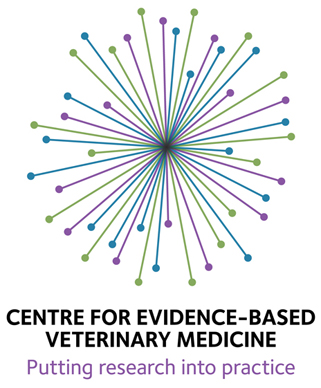I have written many times about the misuse of diagnostic tests and the risks of misdiagnosis and overdiagnosis associated with improper use of screening tests. Recently, I condensed my rants on these topics into an article I hope will be useful to veterinarians.
McKenzie, B.A. Rational use of diagnostic and screening tests. Journal of Small Animal Practice (2021), 1–6. DOI: 10.1111/jsap.13393
Veterinarians have a vast and ever-expanding array of diagnostic tests available to them. However, this abundance can be an embarrassment of riches that confounds diagnosis and undermines patient care if we do not make critical and informed decisions about the selection and interpretation of the tests we employ. Effective use of diagnostic tests requires a deliberate and informed approach. We must consider the strengths and weaknesses of the tests themselves and the clinical context, and we must be wary of the many biases that skew our use and interpretation of diagnostic tests. Understanding sensitivity and specificity, likelihood, prevalence and predictive value, the basic principles of Bayesian reasoning, and the cognitive biases that drive inappropriate testing are all critical to ensuring our use of imaging and laboratory testing improves patient outcomes.










Thank you for standing up for our pets. I experienced that just recently with an ultrasound on my girl’s abdomen which they insisted she needed. It only confirmed what the blood test already diagnosed. Issue I have is they would not do U/S without $240 up front. As a retired Sr trying to live on Soc Sec I found out later that this Vet always orders that! I would not have consented if I knew.
This is my first comment on your blog, which I have now been following for more than a year. Thank you for continuing to popularize evidence-based veterinary practice.
As a pet owner, it seems to me that there is a dilemma when it comes to screening of healthy animals and to the danger of over-diagnosis that does not apply to humans as much. And the dilemma is, most of us owners – busy, stressed – will probably only notice a symptom when it is big enough to be noticed. Especially in cats, who go to extra length to hide pain.
A human can notice discomfort early, observe that it is not going away, call their family doctor, and describe in detail what is happening. This kind of early detailed symptom detection is completely impossible in pets. So that makes screening a dilemma where the risks and harms of over-diagnosis are definitely a factor — yet if symptoms on average will probably be detected by owners later and at a more severe stage than in humans, that is also a factor. So to me, it seems likely that strong evidence of over-diagnosis and over-treatment in humans would be less strong in pets. How much less, is precisely what makes it a dilemma with no good answers. Does this make sense?
So recommendations 1 and 2 make perfect sense to me. But I am struggling with #3 because as you said, there is no evidence for over-dianogsis and over-treatment in the field at the time, due to lack of research. So really, that means we don’t know how much over-diagnosis and over-treatment exists in veterinary medicine. And although I see all the reasons why *some* – or even *much* of it would be present, I also see reasons – as I outlined above – why it’s also likely to be more useful in animals than in humans. And that seems to make it extra hard to implement it in practice.
I would deeply appreciate any more thoughts you may have on this.
Thanks for the question. Basically, whether screening has a net beneficial or harmful result will depend open all the factors I outlined: how common the disease is, how accurate the test is, whether there is a useful treatment available, etc. The more we have to guess about these factors, the loess confidence we can have in our estimation of whether screening is beneficial. Yet it is almost universally believed to be a good thing, and that’s the predominant problem right now. I am simply trying to introduce vets and pet owners to the idea, proven in humans, that under some circumstances screening can do more harm than good, because this is hardly ever considered.
You are correct that in the absence of self-reporting of symptoms, as happens in people, it is possible that the prevalence of disease in apparently healthy dogs and cats might be higher than in apparently healthy humans. If true, then screening might be more likely to be beneficial in vet med than in human med. However, this is just a hypothesis, so we don’t know for sure. I’ve seen both owners who overlook obvious and dramatic signs of illness and owners who demand every imaginable test out of anxiety when their pet is clearly well, so hard to say what the balance is.
In some cases, however, screening isn’t helpful even if we detect asymptomatic disease. If we run a urine culture in a cat with diabetes or kidney disease, for example, as used to be commonly recommended, we will often find bacteria. We used to pat ourselves on the back and prescribe antibiotics when that happened. Now we know that in the absence of symptoms of UTI, this finding is normal, and the antibiotics can only do harm, so there is no reason to test without symptoms.
Similarly, many clinically normal older cats will have elevated SDMA levels indicating Stage 1 Chronic Kidney Disease. We would miss this if we just looked at creatinine or didn’t test at all. however, there is no treatment that helps these cats at this stage, so knowing only makes owners worry and leads them to decline other treatments that might help their cats (such as dentistry) because they are now known to have kidney disease.
So even if it is true that testing will find diseases when owners have missed the signs, this still doesn’t always mean that the testing, and subsequent treatment, benefits the pet.
Thanks again for the question!
Having run a boarding kennel and listened to a lot of sad end of life stories, I’d say another place where testing is over used is in terminal conditions. I have really appreciated vets who frankly tell me that 1) the test will be expensive and 2) the findings are unlikely to result in a life saving treatment. I feel deeply sorry for people who spend thousands that they don’t have on testing, only to have the animal die soon after.
People with a very sick pet are often grasping for hope. Yes, wise use of testing sometimes finds a cure. But too often tests are offered to give hope where a condition has progressed so far that euthanasia is the kinder treatment.
Pingback: NuQ Cancer Screening Test- Yes of No? |